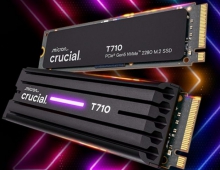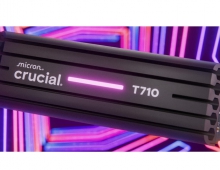Crucial Ballistix PC2-8500
2. Setup and Configuration
Review Pages
2. Setup and Configuration
3. SiSOFT Sandra - RightMark
4. Science Mark - SuperPi
5. Comparison Results
6. Conclusion
In order to test the memory modules, we used the following setup:
- CPU: Intel XE6600 @ 2.4GHz
- Motherboard: eVGA 680i LT
- PSU: OCZ GameXStream GXS600 SLI-Ready
- VGA: MSI 7600GT Silent (stock memory/core timings)
- HDD: WD 800JB
- OS: Windows XP SP2 with all the latest updates installed
While for benchmarking, we used:
- Memtest86+ v1.70
- Sisoft Sandra 2007 SP1
- RightMark Memory Analyzer v3.70
- ScienceMark 2.0 Memory Benchmark
- Pov-Ray v3.70 Beta15
- SuperPI XS Mod v1.50
The eVGA 680i LT motherboard offers many possibilities for overclocking both the memory and CPU, either synced or not. For most of our tests, we left the memory and CPU un-synced and tried to find the best possible memory timings. Each test before benchmarking, had to pass a 30min burn-in with Memtest86+ v1.70 (DOS), without producing any errors. Furthermore, we tried the Pov-Ray benchmark and Orthos Stability test under Windows to ensure that our system was rock solid. All benchmarks were then run twice for confirmation and all displayed results are the average from both measurements.
The SPD as reported by Everest Ultimate Edition are set only for 400 and 533MHz with CL4 and CL5 respectively:

The memory modules can work at even 1T with Nvidia based chipsets, for example @ 400MHz very low timings are possible, down to 4-3-4-8:

Lastly, here are the results for FSB and used voltage. In order to get low CL4 timings at 1067MHz, we had to use 2.30V memory voltage, and the highest DDR2 1230MHz, could only be achieved with 2.40V, rather high for a memory module. We tried to reach DDR2 1250MHz with 2.50V, but this produced many errors in the MemTest86+ test:
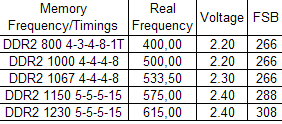
At DDR2 1230MHz, our CPU FSB and RAM were synced (1:1) and we overclocked the CPU up to 2.767GHz
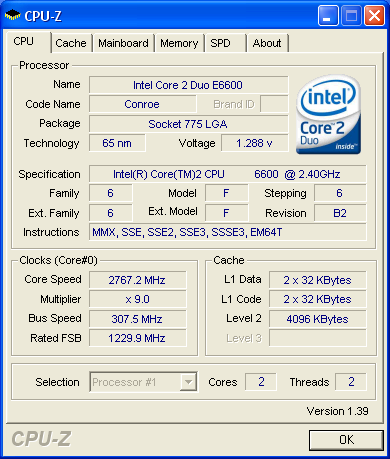
Below are the memory timings as reported by CPU-Z :
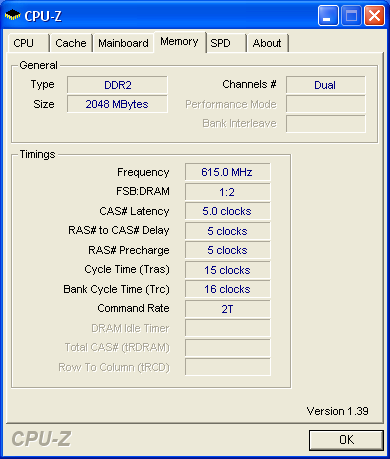
Review Pages
2. Setup and Configuration
3. SiSOFT Sandra - RightMark
4. Science Mark - SuperPi
5. Comparison Results
6. Conclusion




